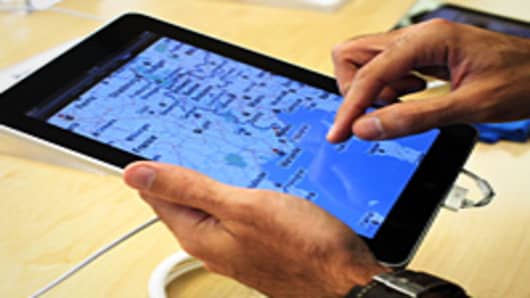The rapid adoption of tablet computers like Apple’s iPad has not reversed the slide in paying customers for news, as many media company executives had hoped the devices would.
Only 14 percent of tablet news users are paying directly for content on the device, according to an extensive survey from the Pew Research Center’s Project for excellence in Journalism.
“In some ways news content on portable devices will go the same way as digital music did a decade or so ago with proliferation of high speed internet and personal computers,” said Dan Nathan, trader and editor of RiskReversal.com. “For a long while people thought they were entitled to it. It wasn’t until it was cheaper and easily accessible through iTunes that people actually bought it.”
If media companies need to make the content cheaper still, that means crushing layoffs and cost-cutting measures in the news business may not be over yet.
Shares of the New York Times and News Corp are down 70 percent and 21 percent over the last five years. Conversely, Google shares are up more than 30 percent and Apple’s stock has appreciated five-fold over the same period.
The survey shows that reading news is second only to web browsing and tied with email as the most popular activity on a tablet. It also shows that tablet users are spending more time on news sites. Yet, of those who aren’t paying directly for news already, just 21 percent of that group say they would be willing to pay $5 per month to access their favorite news source.
That’s bad news for the New York Times, which is charging $5 a week for access to its tablet app plus its web site (not counting a current promotion for 99 cents for the first four weeks.) News Corp. unveiled the first news publication exclusively for the iPad back in Feb. 2011. The Daily goes for 99 cents a week.
“Apple is a buy because no one can match the iPad,” said Michael Murphy of Rosecliff Capital. “Google is a buy because people have figured out that they can get almost anything for free on the net, ‘just Google it’”
That mentality was supposed to change with the launch of the iPad, which fits comfortably in a user’s hands like a book or magazine. Apple sold three million units in the first 80 days after the April 2010 launch of the device,making it the fastest selling non-phone electronic device ever.
“When it was launched, many observers believed that the tablet might help change the experience of news consumers and the economic ground rules of digital news consumption,” writes the authors of the Pew Research Center report. “That belief was based on the sense that people would consume information on tablets largely through special applications or apps that provide content from a favorite news organization like the New York Times or one’s local newspaper.”
The survey showed more than 70 percent still use the web browser or a combination of the web and apps to get their news. Just a fifth of tablet users use apps as their primary source for news.
For the best market insight, catch 'Fast Money' each night at 5pm ET, and the ‘Halftime Report’ each afternoon at 12:00 ET on CNBC. Follow @CNBCMelloy on Twitter.
______________________________________________________
Got something to say? Send us an e-mail at fastmoney-web@cnbc.com and your comment might be posted on the Rapid Recap! If you'd prefer to make a comment, but not have it published on our Web site, send your message to fastmoney@cnbc.com.



